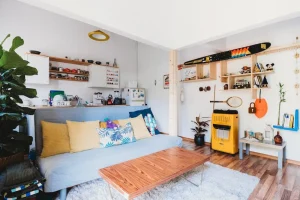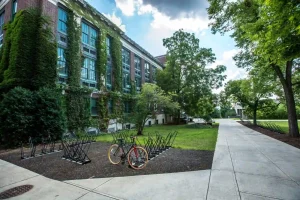In today’s educational landscape, maximizing classroom efficiency is crucial for creating an interactive learning space. Yet, compact classrooms present challenges to achieving this goal. Educators, architects, and designers must navigate the constraints of small spaces to design functional and engaging classrooms effectively. How to maximize small spaces by strategically approaching classroom design can help even the smallest rooms reach their full potential. But where should we start?
Key Takeaways
- Identify and address space-wasting areas, such as underutilized corners and redundant furniture, to enhance the learning environment.
- Leverage walls and ceilings for vertical storage opportunities, using shelves, hooks, and baskets to keep materials organized and within reach.
- Design a strategic floor plan that accommodates diverse learning activities, high-traffic areas, and flexible, multi-functional zones.
- Adopt a flexible and modular approach to allocate space for inclusive educational environments, with distinct zones for focused work, collaboration, and movement.
- Select multi-functional furniture pieces that serve multiple purposes, minimizing clutter and promoting student engagement and a sense of belonging.
Identifying Space-Wasting Areas
In small classrooms, inefficiently utilized areas can impede the learning environment, making it essential to identify and address space-wasting areas that hinder productivity and distract from the educational experience. By conducting a thorough assessment, educators can pinpoint areas of inefficiency, such as underutilized corners, cramped circulation paths, and redundant furniture, and develop a plan to optimize these spaces, ultimately enhancing the learning experience and promoting a sense of community.
Maximizing Vertical Storage Options
By leveraging walls and ceilings, educators can access valuable storage opportunities and free up floor space, effectively tackling the challenges posed by small classrooms. Installing shelves, hooks, and baskets can help store frequently used materials, while overhead storage units can house infrequently used items. This maximizes vertical storage, keeping the classroom organized and clutter-free.
How to Maximize Small Spaces
With vertical storage options in place, the next step is to strategically design the floor plan to accommodate the needs of students and educators, thereby maximizing small spaces. This involves identifying areas of high traffic and designing flexible, multi-functional zones. By doing so, educators can create an efficient and inclusive learning environment that fosters collaboration and engagement, ultimately promoting academic success.
Efficient Classroom Layout Strategies
Designing an efficient classroom layout involves carefully allocating space to accommodate diverse learning activities, ensuring that every square foot contributes to an inclusive and productive educational environment. By adopting a flexible and modular approach, teachers can create distinct zones for focused work, collaboration, and movement, optimizing the use of space and promoting student engagement.
Optimizing Furniture for Small Rooms
In small classrooms, selecting furniture that serves multiple purposes and adapts to diverse learning activities is essential for maximizing space and promoting efficient use of resources. When optimizing furniture for small rooms, consider multi-functional pieces, such as storage ottomans or desks with built-in shelves, to minimize clutter and create a sense of belonging.

Frequently Asked Questions
How Do I Deal With Cluttered Teacher Workstations in Small Classrooms?
To tackle cluttered teacher workstations in small classrooms, implement a “touch once” policy, designate specific zones for supplies, and utilize vertical storage solutions, such as shelves or hooks, to maintain an organized and functional workspace.
Can I Use Multipurpose Furniture to Save Space in My Classroom?
Yes, incorporating multipurpose furniture is an effective strategy to save space in the classroom, as it serves multiple functions, reduces clutter, and promotes a more organized learning environment, ultimately enhancing teacher and student productivity.
Are There Any Specific Color Schemes to Enhance Small Classroom Spaces?
When it comes to enhancing small classroom spaces, strategic color schemes can play a significant role. Soft, calming hues like blues and greens can create a sense of serenity, while brighter colors like yellows and oranges can stimulate engagement and energy.
How Do I Incorporate Technology Into Small Classrooms Without Clutter?
To incorporate technology into small classrooms without clutter, consider wall-mounted interactive whiteboards, compact laptops or tablets with wireless connectivity, and ceiling-mounted projectors to optimize space while enhancing the learning experience.
What Are the Benefits of Using Modular Furniture in Small Classrooms?
Modular furniture offers flexibility, adaptability, and space optimization in small classrooms, promoting collaborative learning, ease of rearrangement, and reduced clutter, ultimately enhancing the overall educational experience for students and teachers alike.
Conclusion
Optimizing classroom efficiency in small-space building projects requires a multi-faceted approach. By identifying and addressing space-wasting areas, maximizing vertical storage options, and implementing efficient classroom layout strategies, educators can create a more functional learning environment. Effective use of space can promote student engagement and academic success. Ultimately, a well-designed classroom can facilitate improved teaching and learning outcomes, even in the most spatially constrained settings.
You May Also Like To Read:

